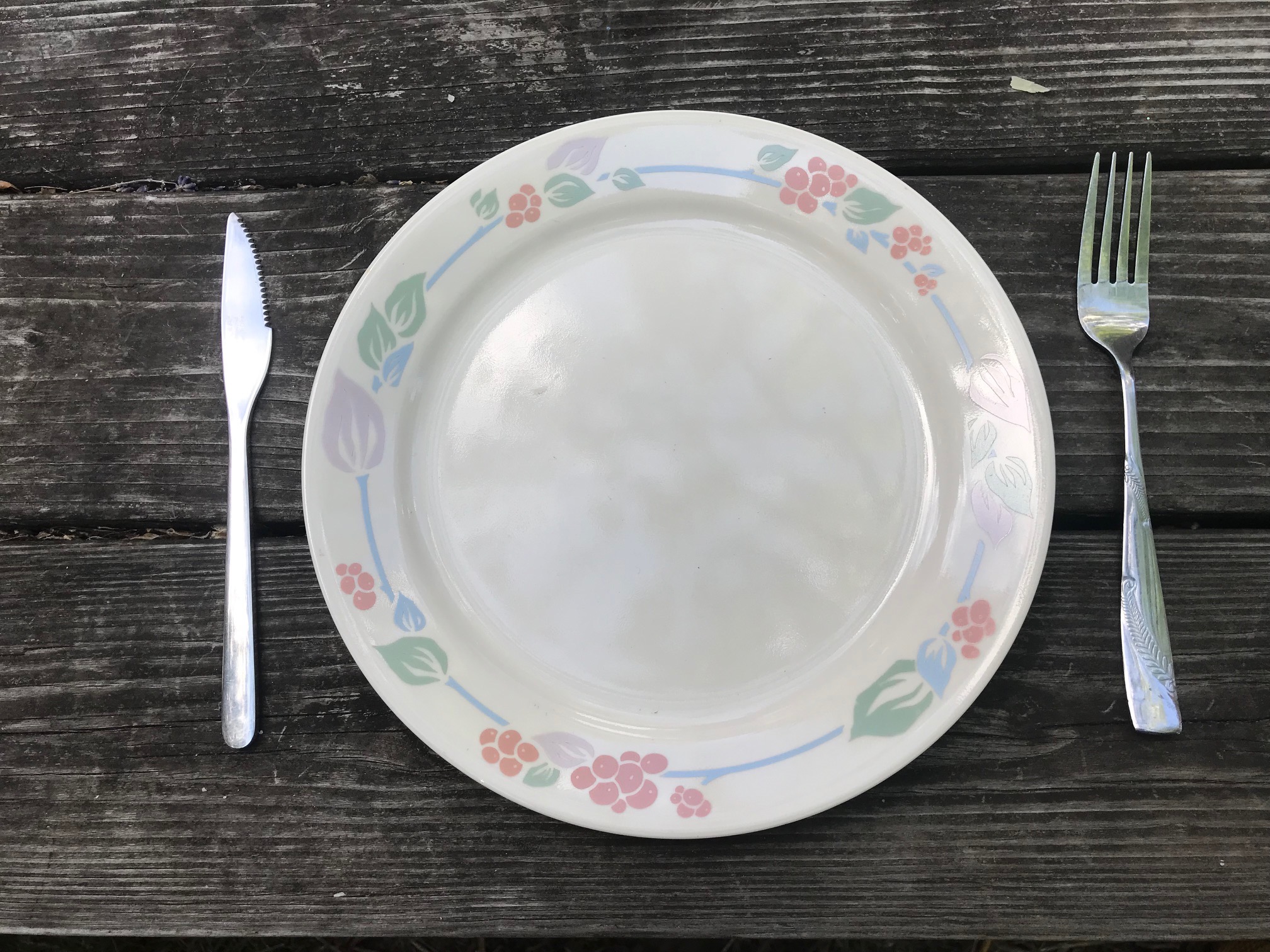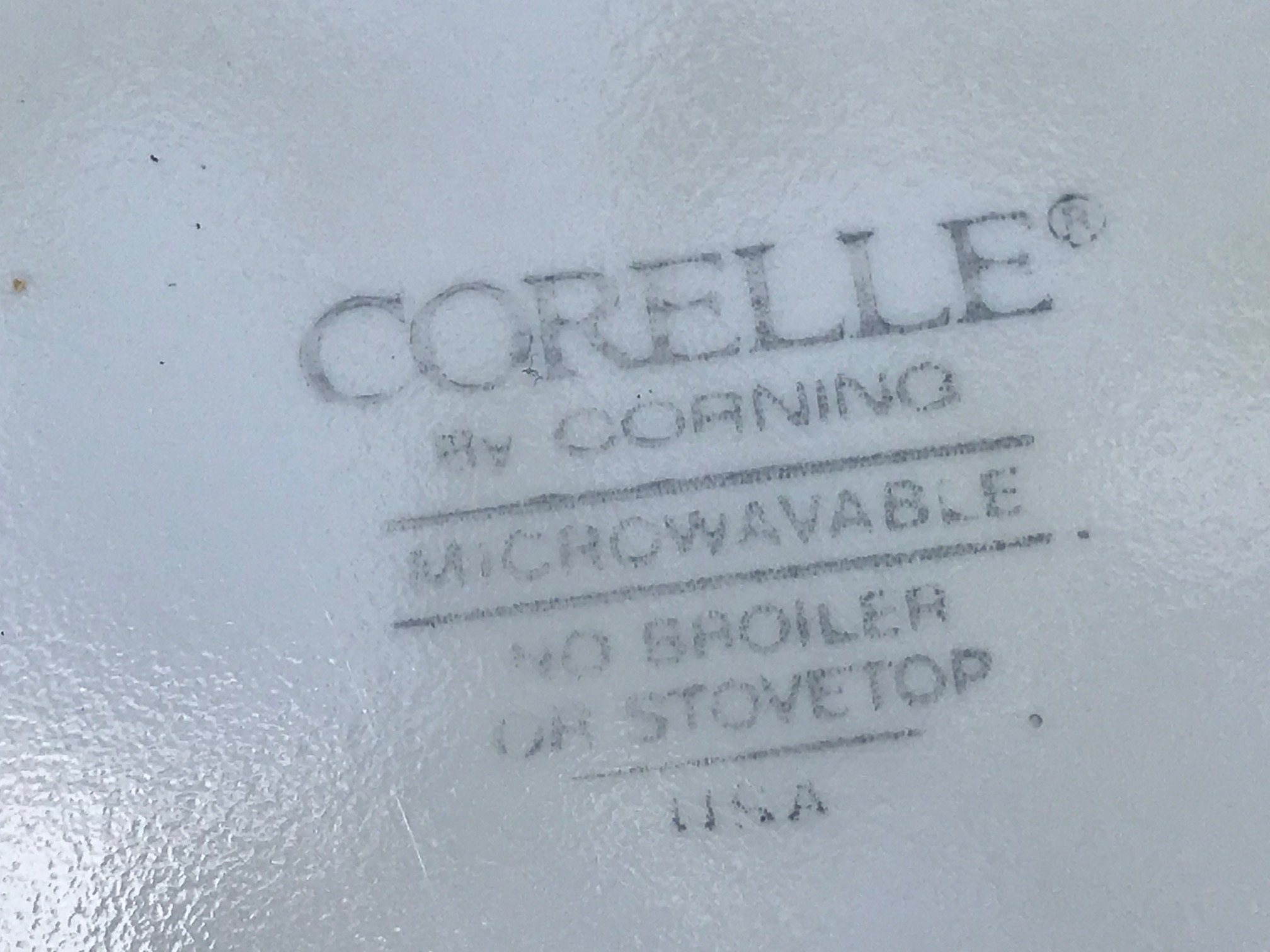Vintage Cream Corelle Plate With Pastel Fruit & Leaf Pattern: 48,800 ppm Lead [90 is unsafe for kids] + 213 Cadmium.
To see more Corelle pieces I have tested, Click HERE.
Vintage Cream Glass Corelle Plate With Pastel Fruit & Leaf Pattern (year of manufacture unknown).
When tested with an XRF instrument the painted decorative border of this vintage Corelle plate was positive for a very high level of Lead. To see the full XRF readings for this exact plate, scroll down. Note: I don’t know the exact year of manufacture of this piece as it was purchased second hand at Good Will. If you have information about the year of manufacture (or year-range) for this pattern, please comment here on this post.
To learn more about XRF testing, Click HERE.
As a mother of Lead-poisoned children and as an environmental activist, I have taken the stand that there is no place for any amount of Lead on our dining tables. None at all.
It literally just takes a microscopic amount of Lead to poison a child (or any human for that matter) and, as of the moment of publishing this post, there is NO ONE studying the potential impact that eating off of Leaded vintage dishware has on the users (because no corporation stands to benefit financially from such a study). Consequently, we need to err on the side of prudence, and proactively remove all potential sources of Lead exposure from our homes ourselves, starting with our kitchens.
For a pretty Lead-free & Cadmium-free option, Click HERE.*
These particular dishes tested positive for 48,800 ppm Lead.
For context to better understand what this level of Lead means; the amount of XRF detectable Lead that is considered toxic in a newly manufactured item “intended for use by children” is anything 90 ppm Lead or higher in the paint, finish or coating, and anything 100 ppm Lead or higher in the substrate.
Dishes (modern or vintage) are not considered to be items “intended for use by children”, and thus are not regulated for total lead content (as detectable with an XRF) in the same way as toys and other similar children’s items (unless they are dishes expressly manufactured, marketed and sold as baby dishes after 2010.]
To read more about the concern for XRF-detectable Lead in dishware, click here.
Related: What should I do if my dishes are positive for high levels of lead? Click HERE.
All tests reported on this blog were done for at least 60 seconds each (unless otherwise noted), using an XRF instrument. The XRF instrument used in the testing is a Niton XL3T, a scientific instrument specifically designed and intended for testing consumer goods for Lead and other metals. The results are science-based, replicable and accurate.
Decorative Edge / Food Surface (image above):
- Lead (Pb): 48,800 +/- 1,500 ppm
- Cadmium (Cd): 213 +/- 24 ppm
- Chromium (Cr): 1,625 +/- 142 ppm
- Zinc (Zn): 88 +/- 34 ppm
- Copper (Cu): 155 +/- 58 ppm
- Titanium (Ti): 14,600 +/- 700 ppm
- Zirconium (Zr): 3,655 +/- 160 ppm
- Platinum (Pt): 540 +/- 184 ppm
Plain Cream Center of Plate / Food Surface:
- Nickel (Ni): 179 +/- 71
- Iron (Fe): 364 +/- 136 ppm
- Vanadium (V): 79 +/- 24 ppm
- Titanium (Ti): 120 +/- 31 ppm
- Zirconium (Zr): 1,673 +/ 51 ppm
To learn more about the concern for Cadmium (Cd), which is a known carcinogen, Click HERE. XRF detectable Cadmium is considered toxic at levels as low as 40 ppm (and above.)
As always, please let me know if you have any questions. Thank you for reading and for sharing my posts!
Tamara Rubin
#LeadSafeMama
*Some links are Amazon affiliate links. If you purchase something after clicking on one of my affiliate links I may receive a small percentage of what you spend at no extra cost to you. Thank you for supporting my independent consumer goods testing in this way!
Never Miss an Important Article Again!
Join our Email List






Hi The label on the back of my Corelle Dinnerware is the same stamp as with this posted pattern and which is also in back of the black and rose pattern that you guessed around 1990. I had bought my Corelle yellow outer- ringed plates with free flowing flowers painted on them in 1994-1995. I am no longer using these plates after seeing the test results. Thank you for your work.
Well, I received this set for Christmas in 1994 or ‘95z. I’ve now used it 27-38 years. I’ve had numerous health issues/ surgeries, this’d LOTS of blood work up’s during that time. I have NEVER had issues with lead or anything mentioned in the above TO MY KNOWLEDGE. My doctor is very thorough and takes excellent care of me. I think I’m good. HOWEVER, for those that may have issues. I think advising me to use them as “decorative pieces” is an insult!! They can’t AT LEAST offer reimbursement or some sort of compensation? Really?!? I’m asked to decorate my home with reminders, seen every day, of THEIR MISTAKE and, of course, the health scares?!? Shame on them is all I can say.